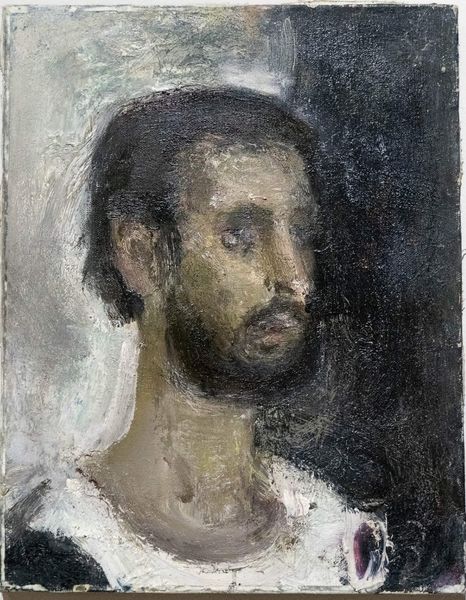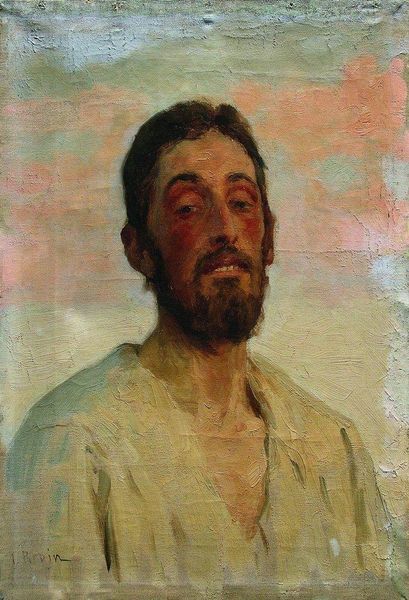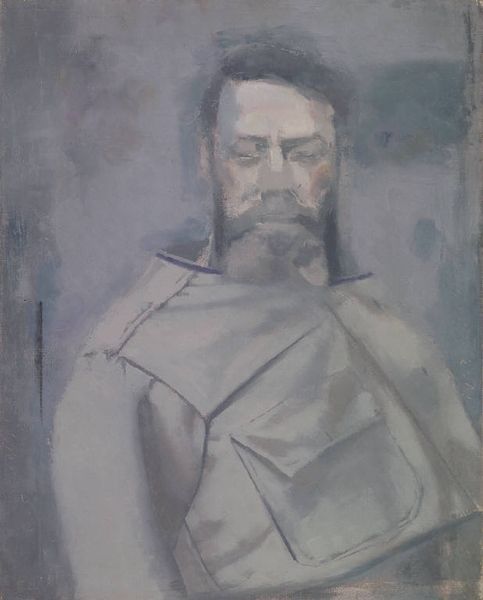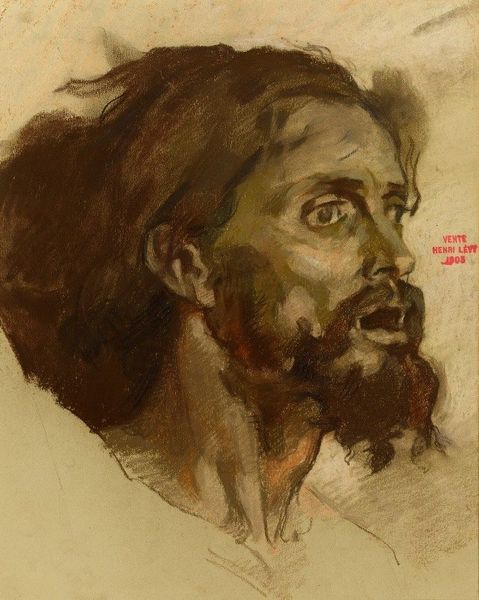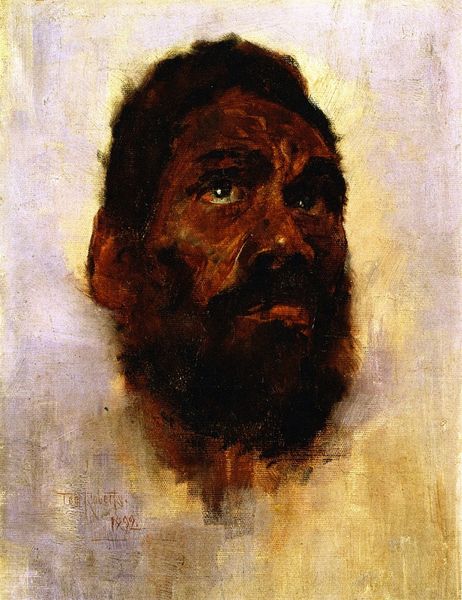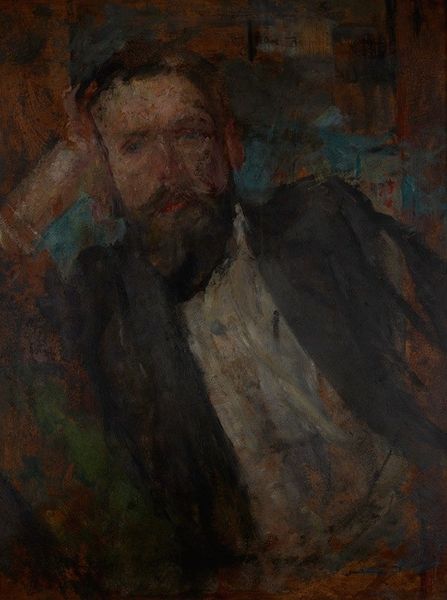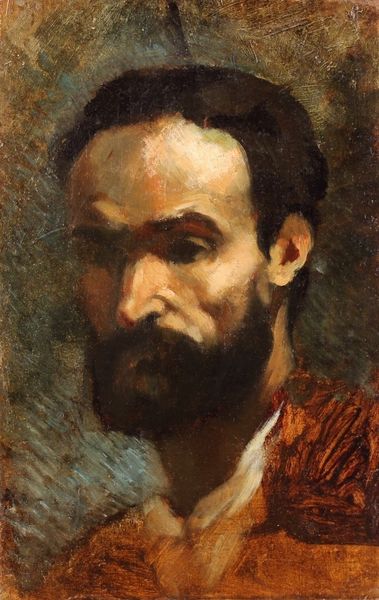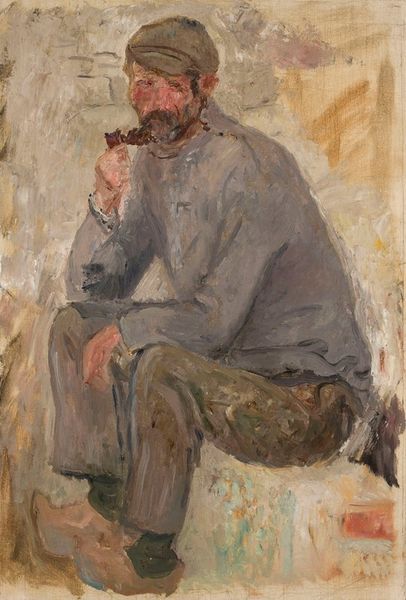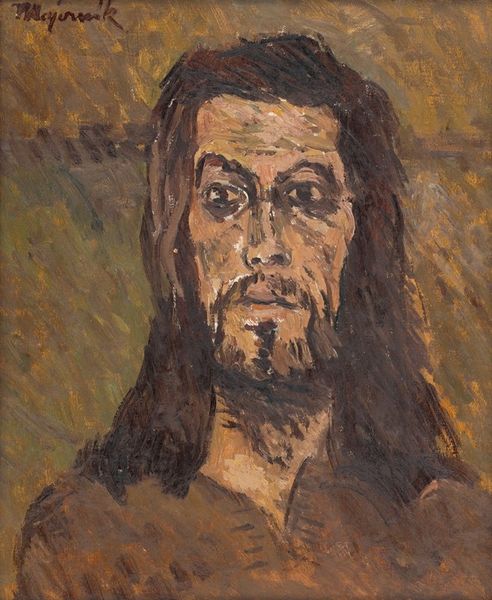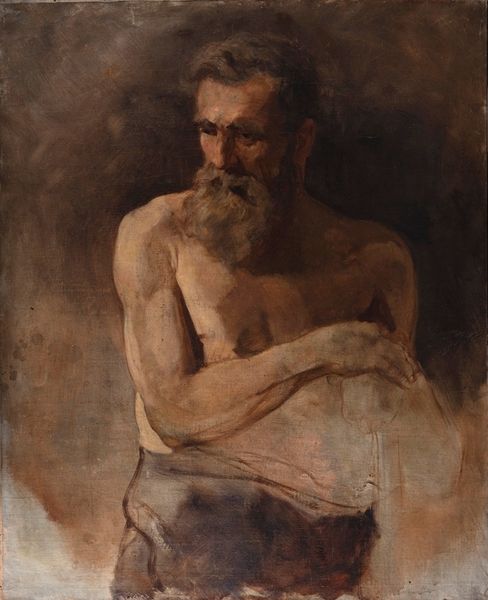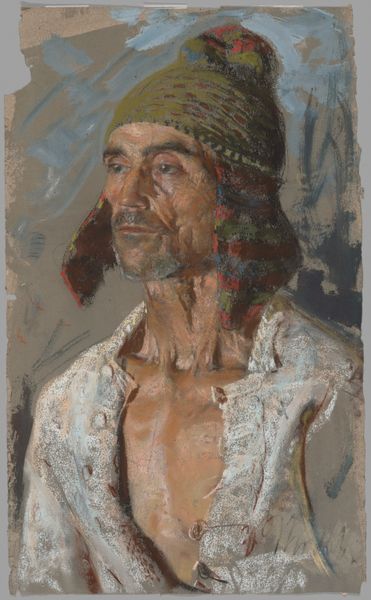
oil-paint, impasto
#
portrait
#
oil-paint
#
oil painting
#
impasto
#
neo expressionist
#
neo-expressionism
#
portrait art
#
realism
Copyright: Public domain
Curator: Take a moment to observe this expressive painting by Hélène Guinepied, simply titled "Man's figure." It appears to be an oil on canvas portrait, possibly dating to the neo-expressionist movement. Editor: It strikes me as very immediate, almost urgent. The impasto technique—those thick, visible strokes of paint—give it such a raw, textured quality. Curator: The use of impasto does lend the figure a feeling of almost being sculpted from paint, doesn’t it? It makes me wonder if the artist aimed to imbue this anonymous man with the weight of historical male archetypes. Think of ancient statuary emerging from the earth. Editor: I agree that it definitely draws attention to the process itself. It also suggests the availability of materials. Layering like this, while expressive, uses quite a lot of paint, right? And notice the dark blues worked into the hair and beard, which complicates its appearance. Curator: Those blues certainly catch the eye, don’t they? Traditionally, blue pigment, particularly ultramarine derived from lapis lazuli, held strong symbolic value in painting, frequently associated with royalty and spirituality, and even melancholy. Editor: Right, a color's availability dictated a lot about it. Here it's not just pigment; it suggests economic or studio availability. Also, note the man is nude to the waist – indicating something like a classical artist’s model, but again with modern twists, using impasto like this. I suppose a camera never lies, as they say, but the hand of the painter will always find a way to exaggerate a bit. Curator: That’s an intriguing point about the nude torso suggesting a model. But perhaps also a vulnerability laid bare? The man averts his gaze. Editor: And it works because of those thick strokes, giving it such immediacy. What do you think is added by keeping this piece so raw and unfinished? Curator: Perhaps this raw quality, these unresolved details, contribute to a feeling of perpetual becoming, a kind of psychological unveiling, don't you think? Editor: Absolutely. Seeing the literal layers reminds me that even in portraiture, everything is constructed and mediated by materials. Curator: Yes, and acknowledging these artistic decisions allows us to interpret our own selves and histories more profoundly. Editor: A thought-provoking approach, certainly gives me a richer appreciation of what went into this intense, arresting piece.
Comments
No comments
Be the first to comment and join the conversation on the ultimate creative platform.
